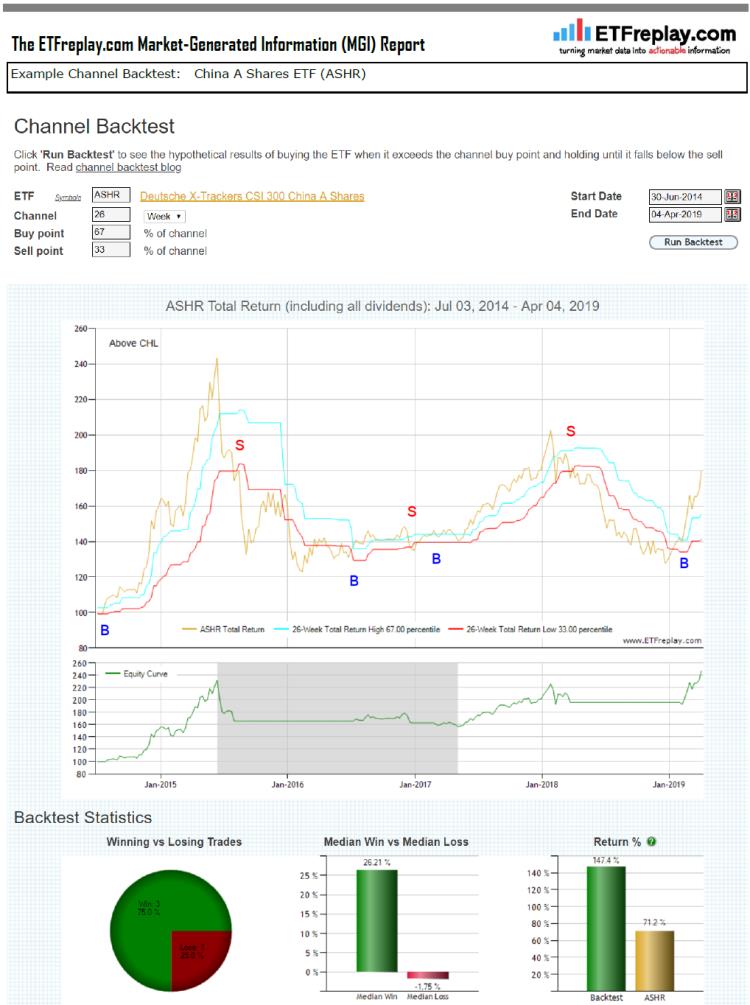Category: Channel
Apr 08, 2025
in Channel, Parameter Summary
We have made two upgrades to the Channel Parameter Performance Summary.
Firstly, the Channel Parameter Summary now allows a range of Buy and Sell points to be tested. Whereas previously only a single Buy and Sell point could be specified, it is now possible to set min, max and step values for these two parameters.
Secondly, a Substitute function has been added, which allows a different / replacement security to be specified for the execution of the actual trades. For example, a channel can be based on the Total Return value of QQQ, but the resulting trades can be executed in QLD.
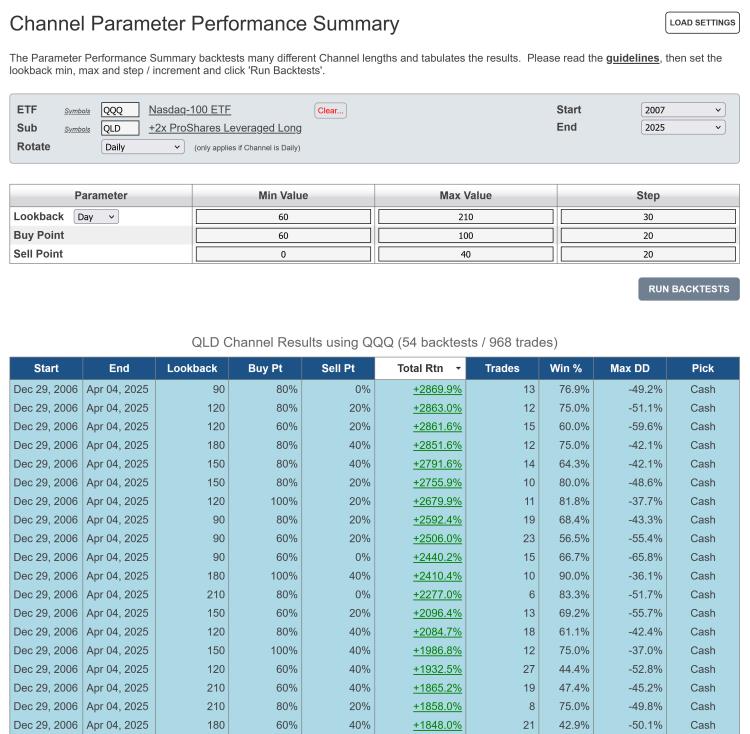
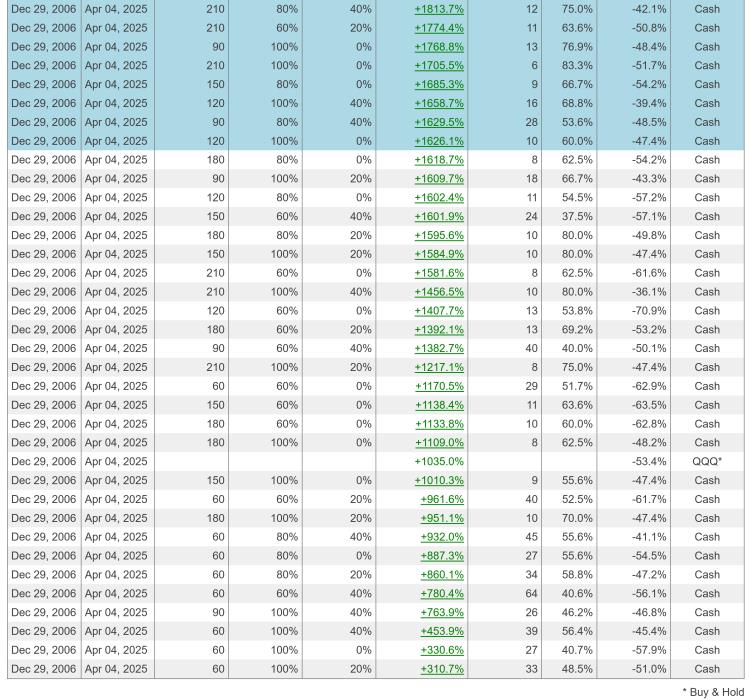
click images to view full size versions
Go to the Channel Parameter Performance Summary
Notes:
- Studying the guidelines is strongly recommended.
- Parameter Performance Summaries are available to both regular and pro annual subscribers
Mar 04, 2025
in Moving Average, Channel
We have added a 'Substitute' function to the ETF Moving Average and Channel backtests.
Clicking 'Substitute' allows subscribers to specify a different / replacement security for the actual trades. For instance, in the example below the backtest invests in QQQ when XLK is above its 12-month Exponential Moving Average (EMA).
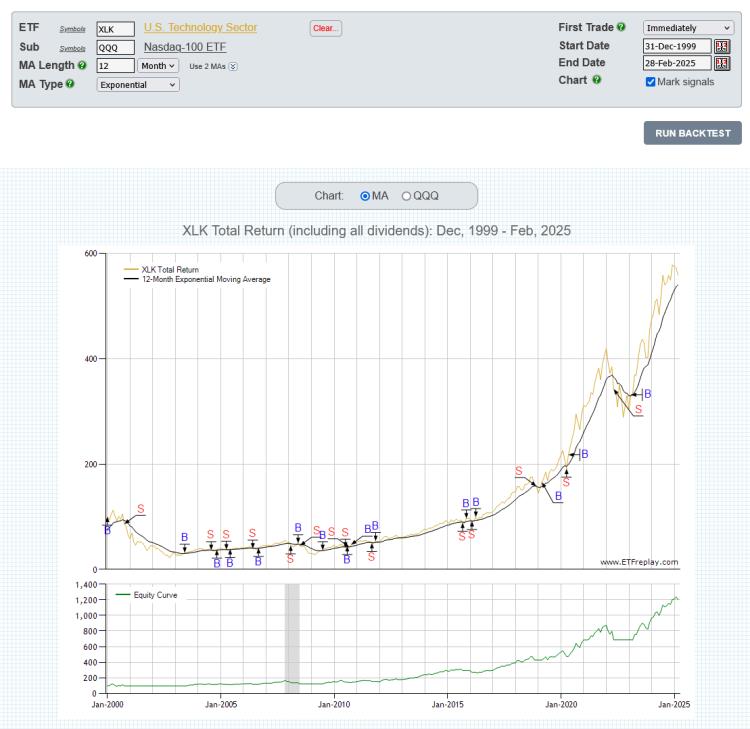
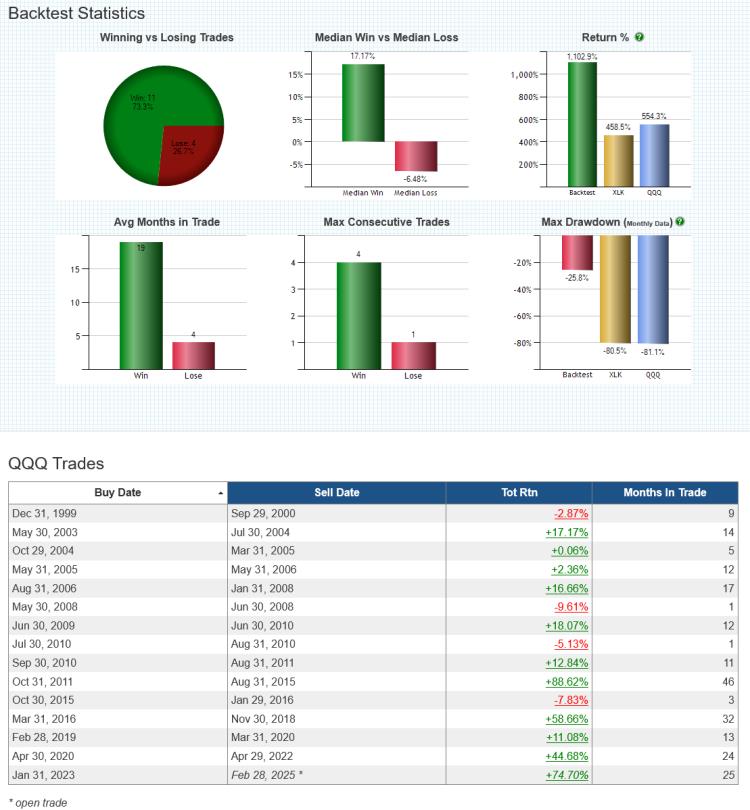
click chart images to view full size versions
The Substitute function is available to all subscribers on the following backtests:
Note:
To test investing in Portfolio A when x security is above its MA and Portfolio B when x security is below its MA, use the Regime Portfolios backtest.
Oct 20, 2022
in Moving Average, Channel
Trend following approaches, such as Moving Averages and Channels, preserve capital by cutting losses and as such they need sustained bear markets to outperform.
While they will generally capture the bulk of a bull market, the inherent lag means that a trend strategy can never sell at the high of an up move and can end up surrendering significant gains before exiting.
Consequently, outside of bear markets, the best they can do is to be fully invested and match the performance of the benchmark. However, bull market corrections and the short-lived directional moves of sideways markets mean that trend-following methods will inevitably suffer some whipsaw losses.
In other words, lengthy periods of underperformance should be expected in bull and range-bound markets. For those that can endure these mentally taxing and financially challenging periods, the pay off is the avoidance of major bear market drawdowns.
Below are a pair of backtests, a channel and a moving average, on a simple global 60/40 portfolio (VTI 35%, VGK 10%, VPL 10%, VWO 5%, AGG 30% and TIP 10%). Examination of the annual returns shows both the strengths and weaknesses of these trend following methods.
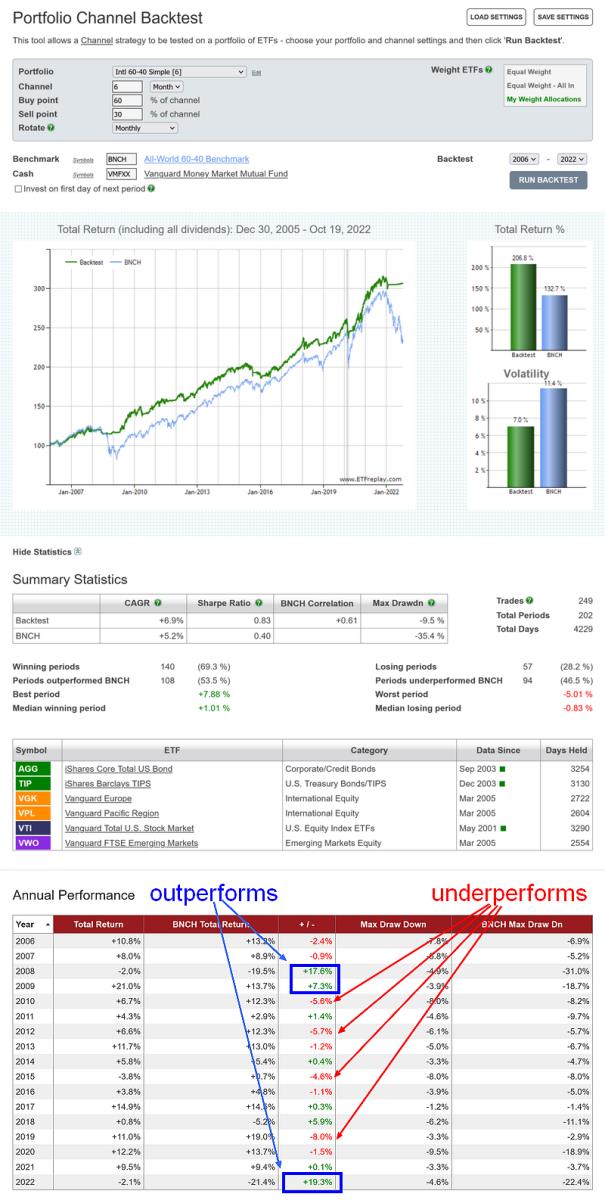
click image to view full size version
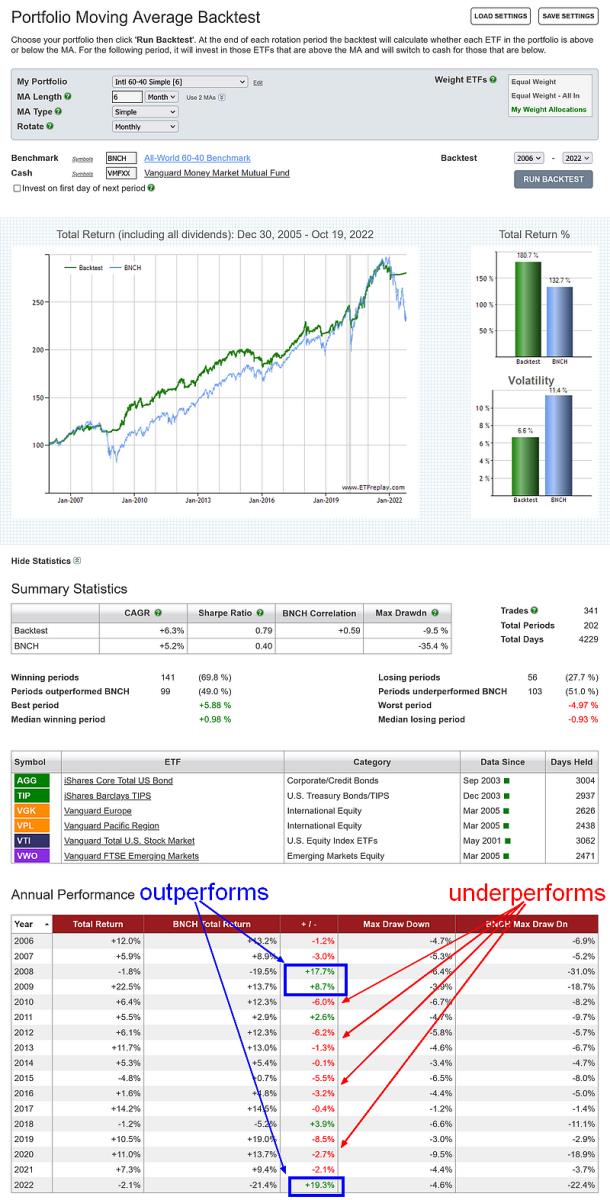
click image to view full size version
Portfolio Channel Backtest
Portfolio Moving Average Backtest
Aug 31, 2021
in Backtest, Moving Average, Channel, Ratio, Parameter Summary
We have added three new Parameter Performance Summaries to the website:
As with the Relative Strength and TRD summaries that we introduced in July, each of the above can be accessed from their respective backtests.

Set the min, max and step / increment for each parameter, then click 'Run Backtests' and the tabulated results will be displayed:
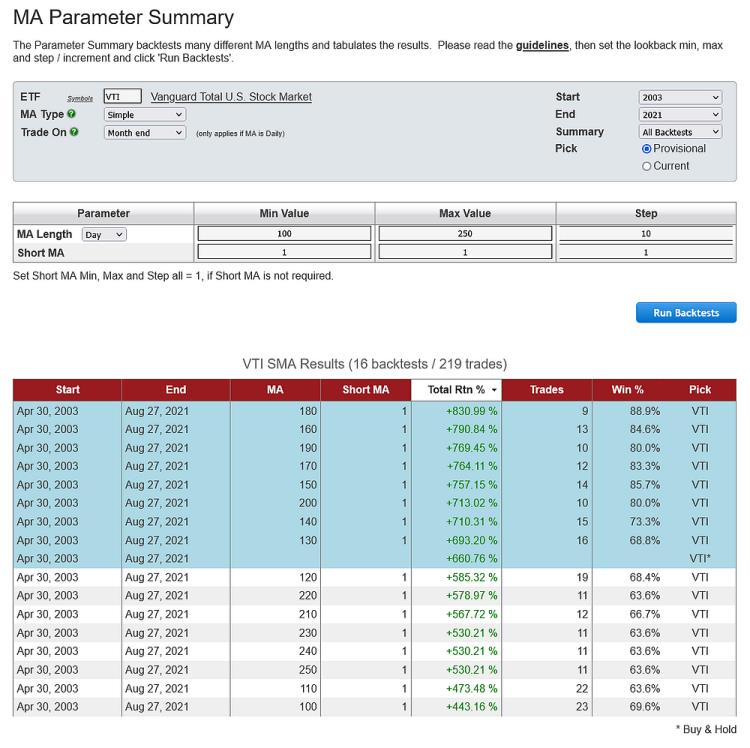
Parameter Performance Summaries are available to all (regular and pro) annual subscribers.
** studying the guidelines that we published within the original Parameter Summaries announcement is highly recommended **
Apr 05, 2019
in Channel
Channels are a good, simple supplement that offer an ABSOLUTE look and can be used in conjunction with other RELATIVE studies. Wider channels give your trade room to work. Tighter channels will cause some whipsaw losses. If you are bullish on an ETF based on a range of factors, then running a skewed channel might be a good idea --- ie, run the exit (Sell channel) at 0% but a buy at just 60%... This allows you to get in quickly while still offering room for the investment to work. This study uses a simple 67% / 33% buy/sell trigger with a ~6 month lookback (26-weeks means you will trade usually on a Friday -- if holiday then Thursday). Entries and exits only occur on the close of the last day of the week (Fridays) allowing for easy monitoring. Note that this look has trades that have lasted a while. This is because the sell rules will allow a fair bit of movement before exiting.
Finally, because a channel uses a percentage, it may be easier to see the trend in the ETF than othewise. An uptrend is defined by higher lows and higher highs. A downtrend is defined by lower highs and lower lows. The channel is a another tool to have to see and understand what is happening in the market.
